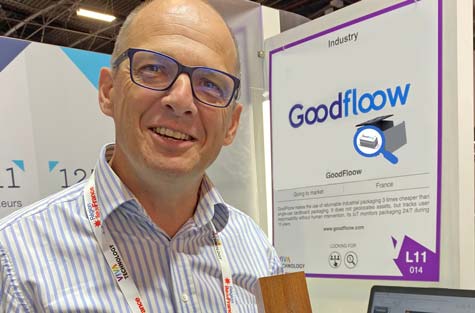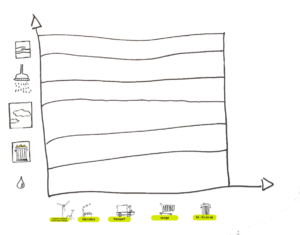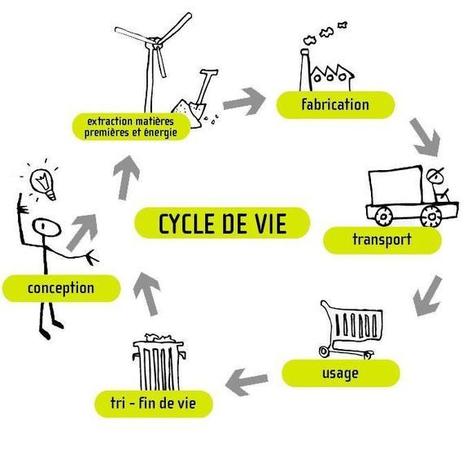Today, reusable industrial packaging divides CO2 emissions by 3, but its cost of use is higher than that of disposable packaging because the owner of the packaging cannot identify the person responsible for theft, loss or breakage. The start-up Goodfloow is developing a solution that allows the packaging owner to prove which user is responsible for which packaging and from when to when, without geolocation.
“In 2017, when I was an independent sales agent, I was selling reusable industrial packaging to the automotive industry, both manufacturers and equipment suppliers. All the studies agreed that the use of reusable industrial packaging divided costs by 5 and CO2 emissions by 3,” says Ronan Le Roy, CEO of the start-up Goodfloow, incubated at IMT Atlantique in Nantes. But in the field, these same packages did not have a long enough life span to provide their economic and ecological advantage. Even now, loss, theft and breakage reduce their lifespan to an average of three years, which does not make the ecological investment of their manufacture or the economic investment of their purchase profitable.

“I thought the problem had been solved a long time ago with the many IoT solutions available in Europe. But this was not the case,” says Ronan Le Roy. The solution developed by Goodfloow makes it possible to “provide the legal proof that identifies the user responsible for each reusable package at all times, which is the only way to make reusable packaging cheaper than disposable” he explains.
To identify those responsible, the young company relies on a node (a connected object) and a back-end application (not visible to the user), the real head of the system. The node, designed in partnership with IMT Atlantique, IMT Nord Europe, Inria and Irisa, has the task of collecting irrefutable information, such as the reception of a signal. The application’s mission is to aggregate this information in order to build legally enforceable reasoning.
The originality of the node designed and developed by Goodfloow lies in 3 points:
- It does not provide the geographical position of the packaging, but provides legal proof that identifies the responsible user at any time
- The lifespan of a node is longer than that of the packaging, the system is itself durable
- It does not require additional infrastructure (Gateway)
“The GoodFloow system is dedicated to reusable packaging. That’s why the connected object and the application have been redesigned as a whole. For example, our system is not a centralized system where each node sends information to the center without taking into account the nodes nearby, they communicate with each other,” points out Ronan Le Roy.
Eventually, the package itself becomes responsible for its tracking, not the factory where it is located. In other words, the packaging will pass from user to user without the latter’s information system being used for its tracking, let alone its management.
In order for the solution to be accepted by all the partners in the logistics loop, it is necessary to disseminate the information in a transparent manner. To do this, the GoodFloow web interface allows each member of the supply chain to have access to information about the packaging they own or that has passed through their hands. In addition, if malfunctions are anticipated, the application can target the users concerned, and suggest that they take action to prevent the identified risks from becoming problems.
The GoodFloow application as a whole is “designed to give power to the end user: the operator who works in the factory”, says Ronan Le Roy. This is why a mobile application, totally different from the web application, was created. “We want to provide simple, intuitive, effective and remote solutions to operators,” he adds.
Winner of ADEME’s perfecto call for projects
Goodfloow is the winner of the 2021 edition of ADEME’s Perfecto call for projects. This call rewards and finances the work of the start-up in improving the environmental impact of its solution. “Our solution is entirely eco-designed,” says Ronan Le Roy. “This means that when we design our solution, we check that during its entire life cycle, it will have a lower impact than the solution it is intended to replace,” continues the director of the young company. Thus, the reference solution used in the life cycle analysis can be a cardboard packaging on a wooden pallet but also a reusable packaging without connected object.
To eco-design its solution, the start-up works with the company EVEA conseil, which specializes in multi-criteria and multi-impact life cycle analysis. “Ensuring that our solution, as a whole, has a positive environmental impact is part of GoodFloow’s DNA, it’s even the company’s raison d’être” says Ronan Le Roy.


Goodfloow optimizes the life cycle of its solution
“GoodFloow is a true circular economy solution” explains Ronan Le Roy. “This means that we work a lot on maximizing the lifespan of our connected objects”. In addition, it “increases the lifespan of the packaging on which they are implanted from an average of 3 years to more than 10 years,” he says. It also limits the amount of e-waste from end-of-life nodes, since manufacturers don’t replace the batteries in nodes.
Finally, tracking the packaging helps control who is responsible for it when it is collected and sent for recycling. The owners of the packaging improve their CSR rating by proving that the completeness of what they have purchased has been sent for recycling. This not only makes companies’ investment more profitable, but also avoids the ecological damage caused by the abandonment of reusable packaging in the environment.
Goodfloow has also worked on reducing the energy consumption of its application. To do so, the start-up has divided the weight of its application’s web pages by 20. This allows to optimize the application’s functioning and ergonomics since the pages are displayed more quickly.
The solution developed by Goodfloow will be marketed in early 2023. By then, the young company will have finalized several proofs of concept, notably in the automotive and pharmaceutical sectors. In short, industries in various sectors could benefit from this solution, which would enable them to optimize their investments in logistics while reducing their carbon emissions.
Article from ITM-Atlantique, published on 21.07.2022
